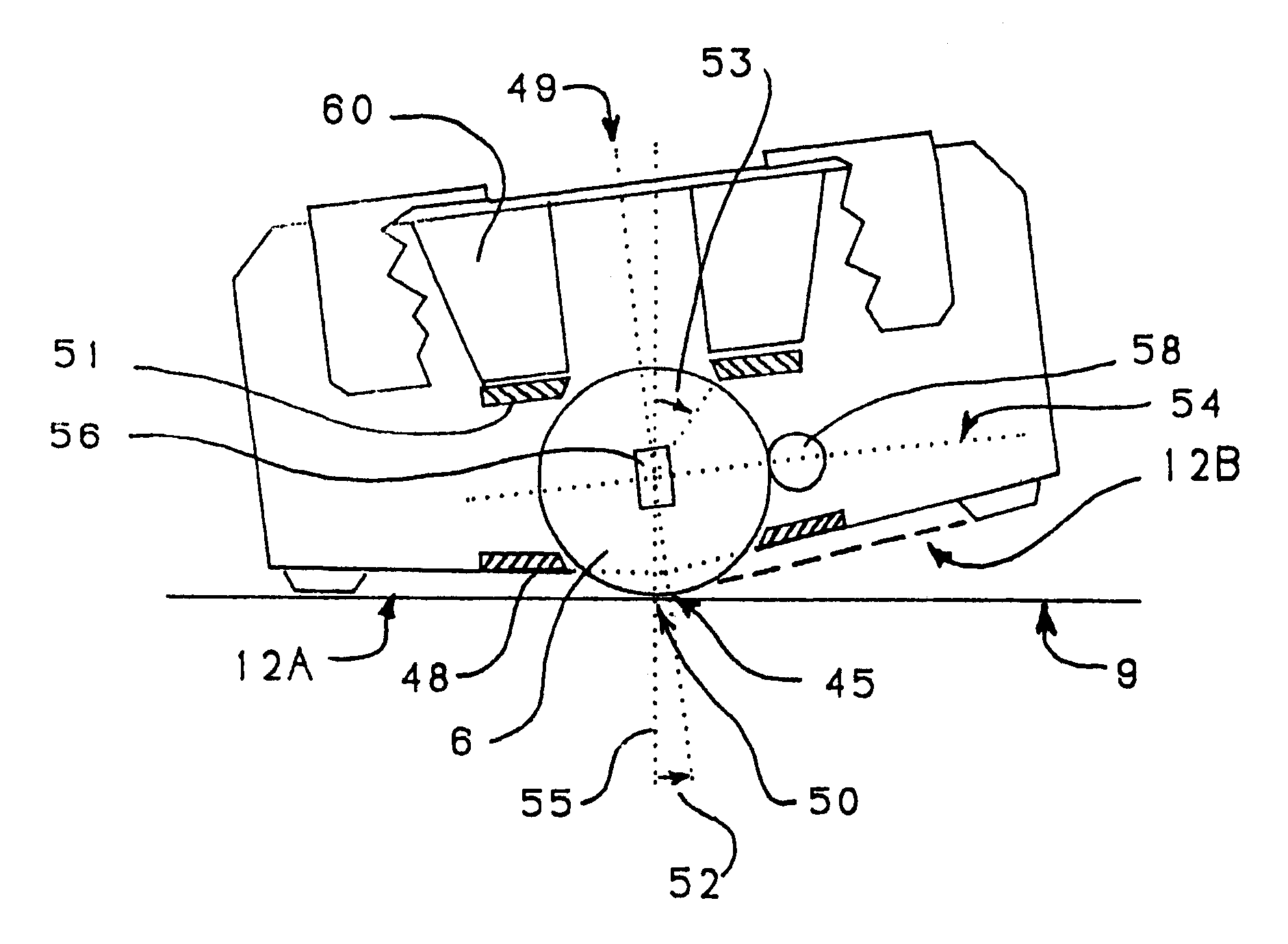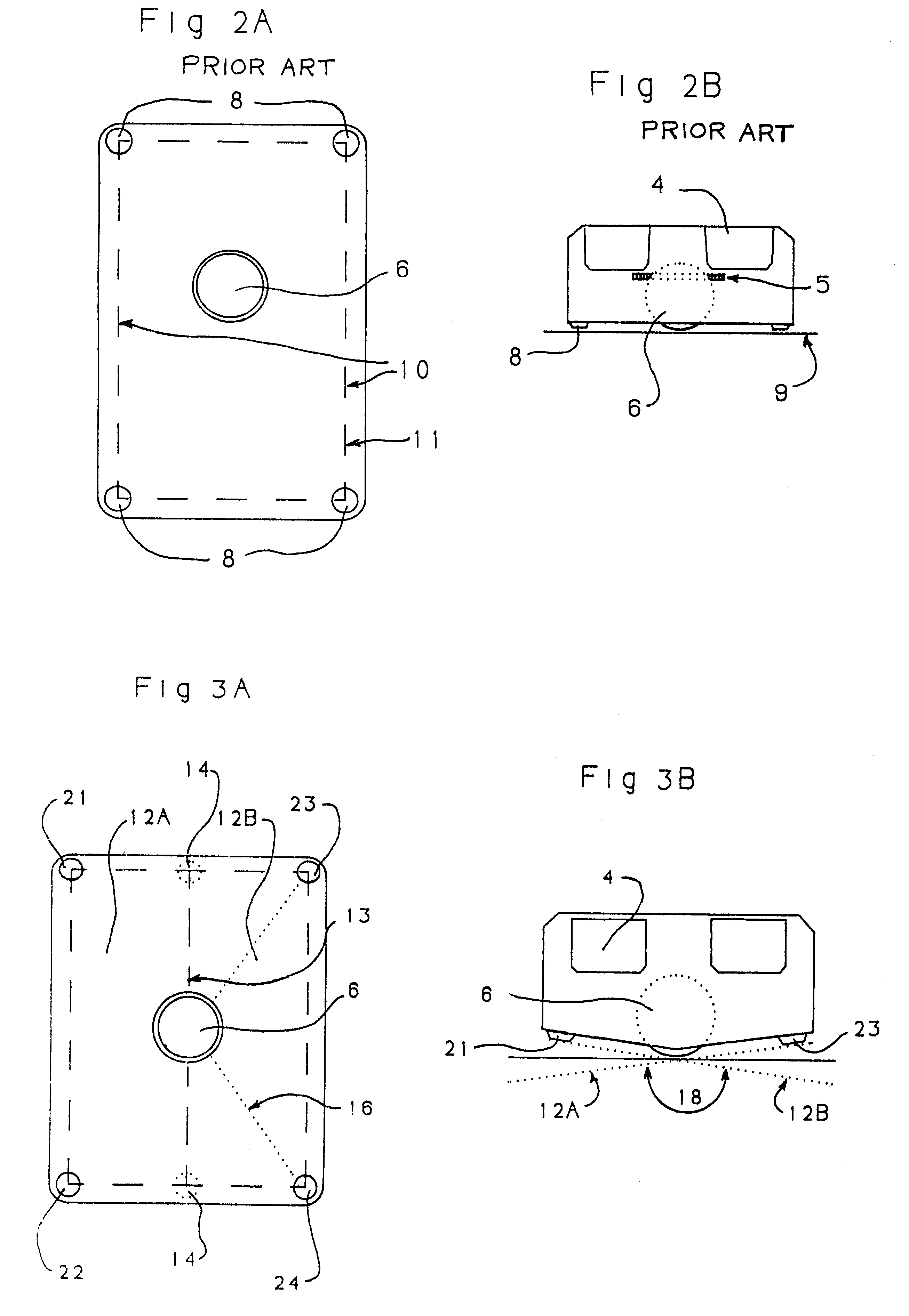Multiple signaling mouse with faceted surfaces
a signaling mouse and multi-directional technology, applied in the field of multi-directional mouse with faceted surfaces, can solve the problems of negative ergonomic loss, "click" keys to the mouse are not qualitative improvements,
- Summary
- Abstract
- Description
- Claims
- Application Information
AI Technical Summary
Benefits of technology
Problems solved by technology
Method used
Image
Examples
Embodiment Construction
FIG. 1 is a perspective view of a conventional mouse 2, with keys 4 and a single plane bottom defined by feet 8. The tracking sphere 6 rides within the housing and is exposed generally in the center of the single plane 10 which the housing provides. Typically the sphere is loosely fitted in the housing with some play in the vertical dimension, so that the sphere may drop by its own weight so that the surface of its lower, exposed pole touches and rides (tangentially) the same desk surface which is congruent with the plane defined by the four feet. It is common for the upper pole of the sphere to have a circular bearing surface of smooth material that limits upward movement of the sphere, otherwise the sphere could be pushed out of sight and lost in the housing of the mouse. Similarly, a lower retainer plate 3 with a circular opening keeps the sphere from falling out of the housing.
As discussed in the preceeding section ("Background of the invention") the tracking sphere commonly is ...
PUM
 Login to View More
Login to View More Abstract
Description
Claims
Application Information
 Login to View More
Login to View More - R&D
- Intellectual Property
- Life Sciences
- Materials
- Tech Scout
- Unparalleled Data Quality
- Higher Quality Content
- 60% Fewer Hallucinations
Browse by: Latest US Patents, China's latest patents, Technical Efficacy Thesaurus, Application Domain, Technology Topic, Popular Technical Reports.
© 2025 PatSnap. All rights reserved.Legal|Privacy policy|Modern Slavery Act Transparency Statement|Sitemap|About US| Contact US: help@patsnap.com



